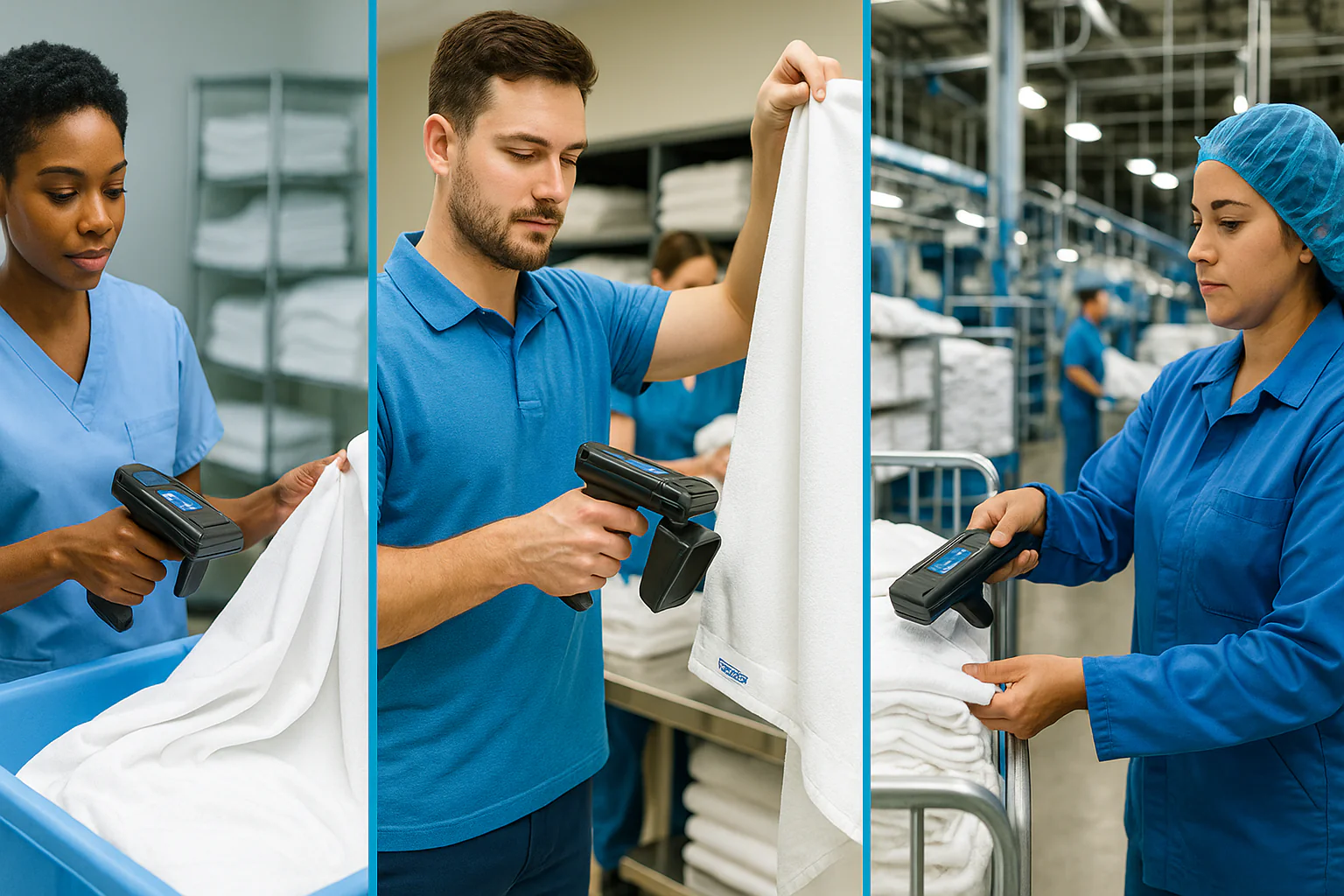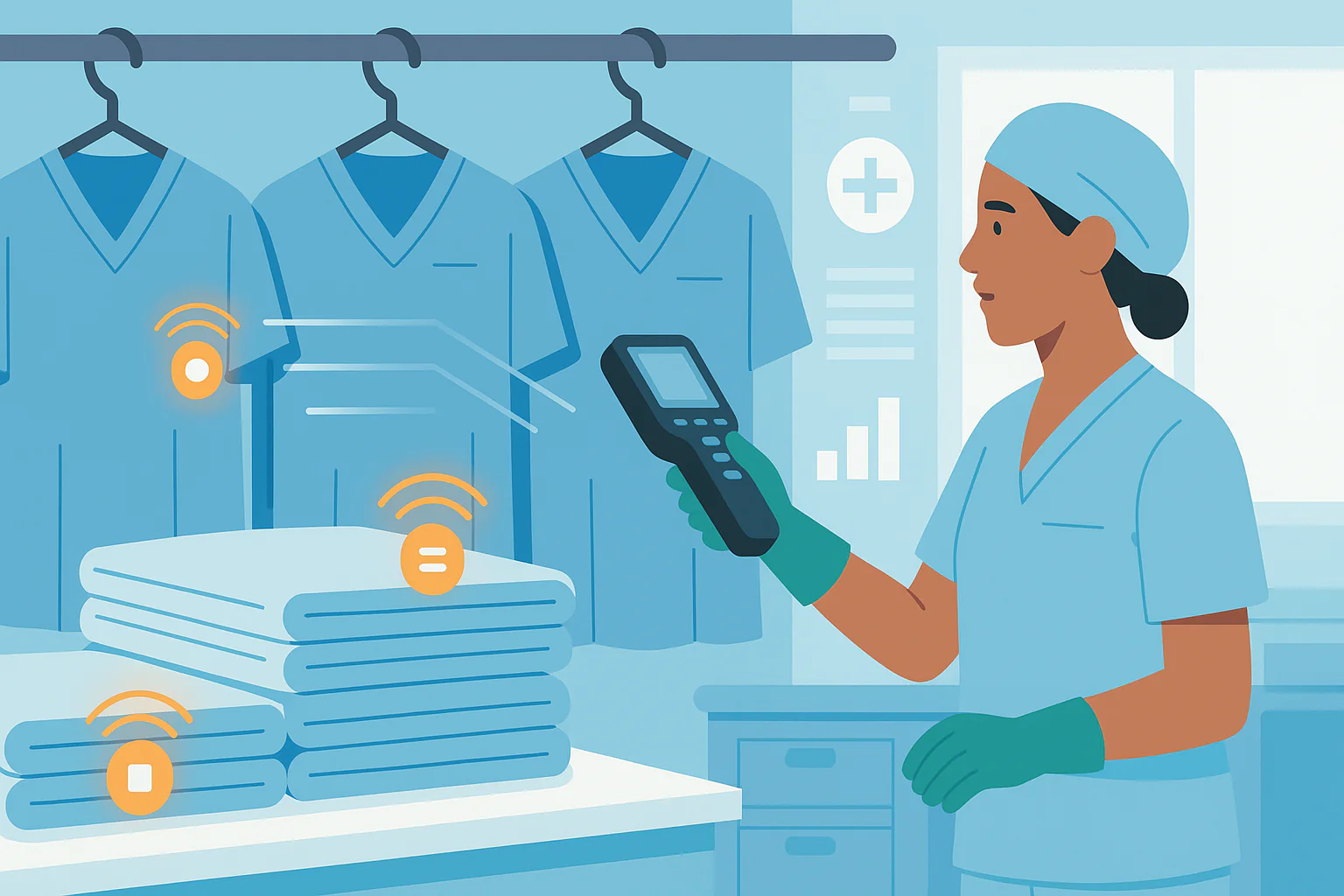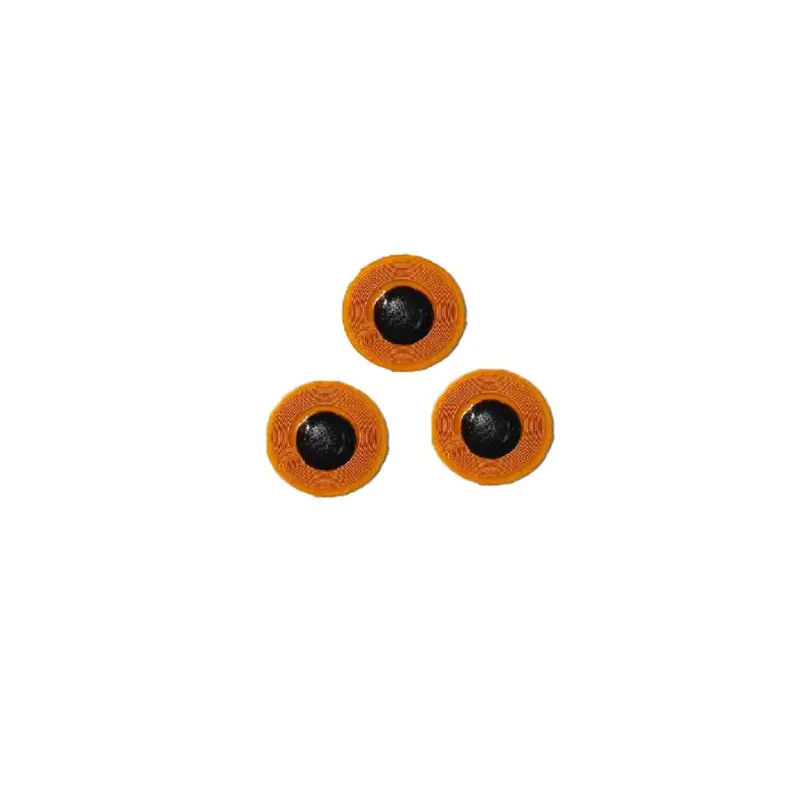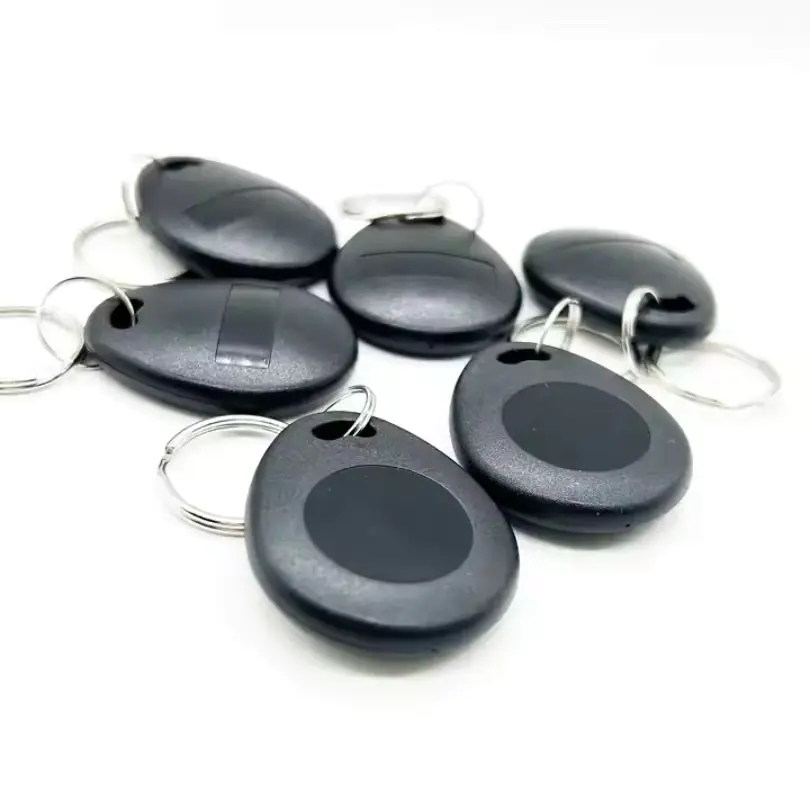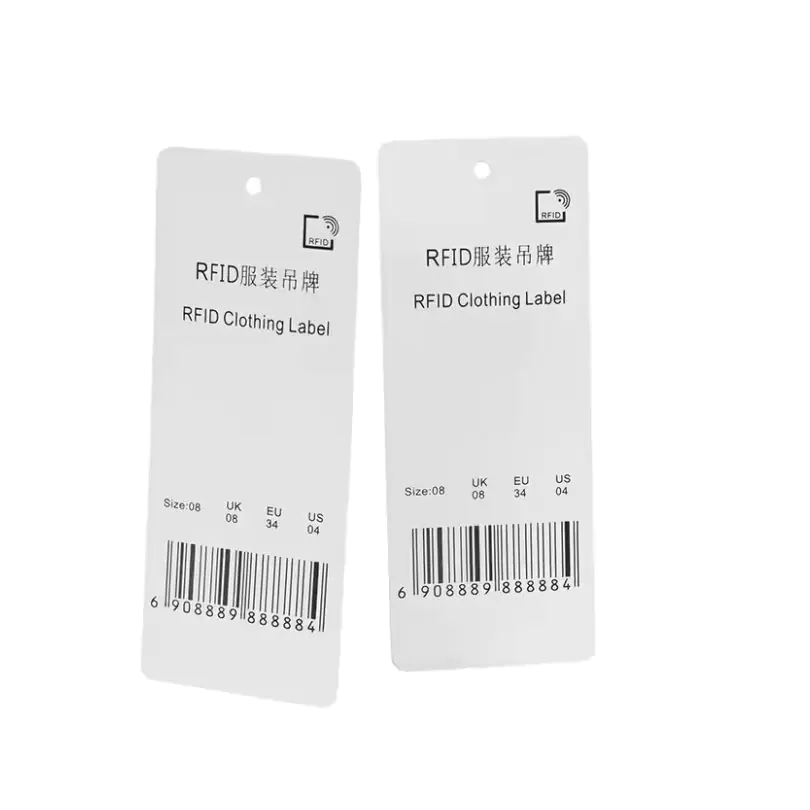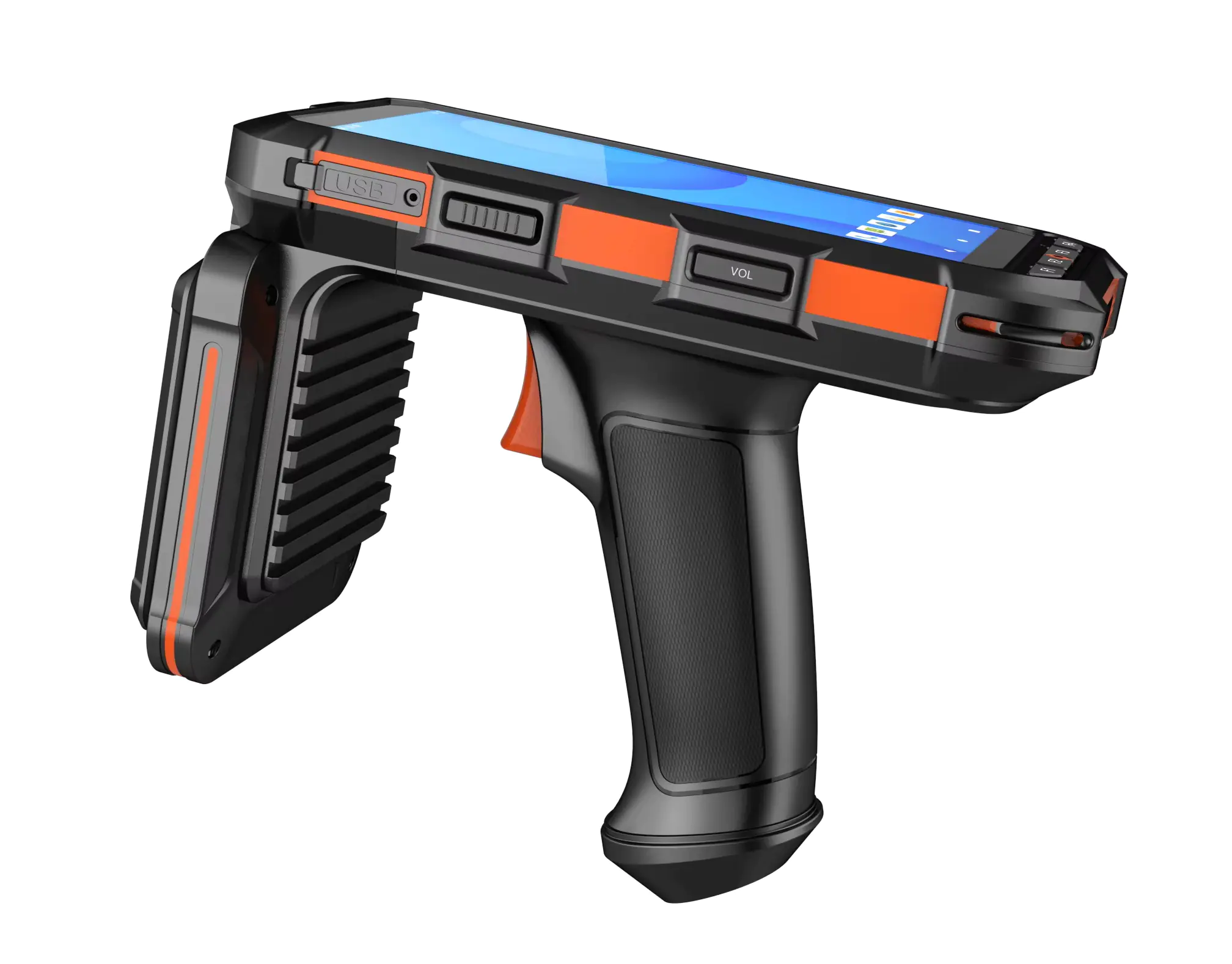
The Benefits of RFID Linen Tags in Commercial Laundry
Jadual Kandungan
pengenalan
These are small chips that use radio waves to track each item. Once sewn into a towel or sheet, the tag can be scanned without touching or seeing it. This helps track every piece of linen, from pickup to washing and delivery.
In this article, we’ll explain how RFID Linen Tags make commercial laundry operations faster, more accurate, and more cost-effective. We’ll also cover how Tag cucian UHF RFID and washable laundry tags improve sorting, safety, and customer satisfaction.
What Are RFID Linen Tags?
RFID stands for Radio Frequency Identification. RFID Linen Tags are tiny devices sewn or heat-sealed into textiles. Each tag has a unique ID. With special scanners, laundries can read hundreds of tags at once, even from a distance.
Most laundries use Tag cucian UHF RFID technology, which works fast and can scan many items in bulk. These tags are also washable laundry tags, meaning they survive hundreds of wash and dry cycles without damage.
Benefits Overview: RFID Linen Tags vs. Traditional Methods
Here’s a comparison of how RFID Linen Tags outperform older laundry tracking methods:
| Ciri | Manual / Barcode Tracking | RFID Linen Tags System |
| Speed of Inventory Checks | Slow (1 item at a time) | Instant (scan 100s of items in seconds) |
| Sorting Accuracy | Prone to human error | Automated and nearly error-free |
| Penjejakan Item | Limited or batch-level | Item-level, real-time tracking |
| Labor Requirements | tinggi | Lower (less manual counting and sorting) |
| Pencegahan Kehilangan | Hard to detect missing items | Tracks last known location; helps reduce theft |
| Lifecycle Monitoring | No per-item usage data | Track wash count, age, and repair history |
| Compliance & Hygiene Control | Manual logs and labels | Digital records with automatic alerts |
| Customer Transparency | Limited reports, manual reconciliation | Self-serve dashboards and accurate billing |
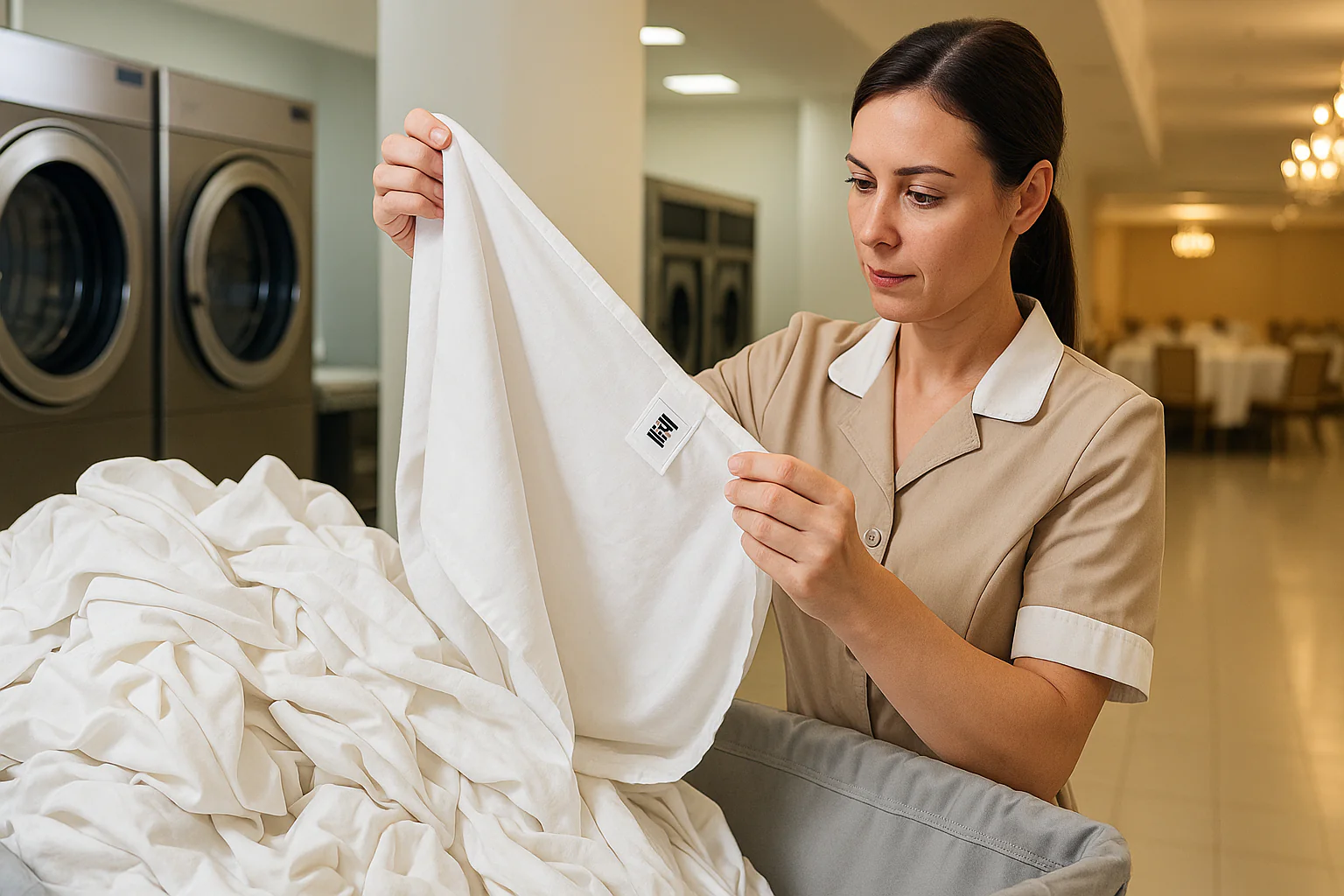
The advantages of using RFID linen tags
Stopping Linen Loss
Losing linens is a major issue. Items get thrown away, stolen, or sent to the wrong place. For example, one hotel lost 4,000 towels a month before switching to RFID Linen Tags. After using the tags, their losses dropped to just 750 monthly towels, saving $16,000.
Using Tag Linen RFID, each item is tracked throughout the laundry process. If something goes missing, the system shows where it was last seen. Some hospitals even install scanners at exits to stop linen theft. One hospital cut its linen loss rate from 4% to under 1% using RFID.
Because laundries know exactly how many items they have, they can avoid over-ordering or waste. In one case, a hospital cut its linen spending by 50% within two years of using RFID Linen Tags.
Better Sorting and Infection Control
Sorting dirty linens is hard work and easy to mess up. Mixing clean and dirty items or sending the wrong order to a customer can lead to unhappy clients — or worse, safety issues.
RFID Linen Tags solve this. At the intake point, scanners read the tags and software sends each item to the correct bin. This prevents mix-ups and keeps each customer’s items separate. For hospitals, this also stops the spread of infections by keeping contaminated linens isolated.
In case of an infection outbreak, RFID data can help locate all washed-together items and quickly remove them.
Saving Time and Labor
Manual tracking is slow. Some hospitals need dozens of workers to check storage rooms and count linens by hand, which takes hours. But RFID linen tags can scan hundreds of items in seconds.
A hospital in Brazil used to take 72 hours to count linens. After installing RFID Linen Tags, it only took 10 hours, saving over 6,000 labor hours per year.
Using UHF RFID laundry tag readers, laundries can speed up check-ins, sorting, folding, and delivery. One laundry used RFID technology to support 50 more hospital beds without hiring more staff.
Accurate Billing and Reporting
Many laundries serve multiple clients. Mistakes in billing can cause arguments. A hotel might think it sent 50 sheets but gets billed for 60. Without proof, the laundry may lose money or damage the relationship.
With RFID Linen Tags, every item is counted and time-stamped. Reports show what was picked up, cleaned, and returned. Some laundries even offer online dashboards where clients can see their data, increasing trust and reducing disputes.
Tracking Linen Life and Performance
It’s difficult to know how old a towel is or how many times it’s been used. Some items get tossed too early, and others wear out before being replaced.
RFID Linen Tags track every wash so managers can see how long an item has been in use. This helps decide when to retire linens, plan purchases, and better use inventory.
One hospital reduced wear-and-tear costs by 72%, saving $130,000 each year, by rotating linens better and catching misuse early—for example, patients being sent home with hospital gowns.
Meeting Safety Rules and Hygiene Standards
Hospitals must follow strict rules to control infections. That means separating dirty and clean linens, using the right wash cycles, and keeping records.
RFID Linen Tags help prove that every item was washed correctly. The system can even warn if an item skipped a wash or went through the wrong cycle. This is key for passing safety inspections and protecting patients.
Automated sorting also protects staff by reducing the number of times they touch dirty items, lowering their risk of getting sick or injured.
Growing Without Losing Control
As a laundry business grows, it becomes harder to manage everything. More clients, more plants, more items—things can fall through the cracks.
However, RFID Linen Tags are easy to scale. Whether scanning 5,000 or 500,000 items, UHF RFID laundry tag readers can handle the volume. Data flows to a central system where managers can see real-time inventory, delivery status, and usage trends.
These systems also link to billing, maintenance, and even robotic sorters, making large-scale operations more efficient. Plus, laundries can use data to adjust routes, predict future needs, and deliver smarter service.
How RFID Linen Chips Work in the Industrial Laundry Process
Let’s walk through what happens when RFID Linen Tags are used in a real industrial laundry:
1. Tagging the Linens
Each towel, sheet, uniform, or gown gets a small washable RFID chip sewn or heat-sealed into it. These chips are about the size of a coin and don’t bother users during wear or use.
2. Pickup from the Client
When dirty linens are picked up from a hospital or hotel, a handheld or tunnel RFID reader scans all the tags, without opening bags. This first scan logs the items into the system, marking them “in process.”
3. Soiled Linen Check-in
When bags arrive at the laundry plant, another scan checks the dirty linens. The system now knows what items came in, from which client, and in what quantity. This helps spot missing items early.
4. Automated Sorting
The tags help machines sort linens by type or client. For example, ICU gowns are routed separately from guest towels. RFID sorters can automatically send items to different wash lines, saving hours of manual labor.
5. Washing and Drying
Because they’re washable laundry tags, the chips stay attached during intense wash and dry cycles. Some systems even verify that each item has been cleaned correctly.
6. Folding and Packing
After drying, items are folded. Some facilities scan tags again to confirm folding counts and match items to the right client. If a client is supposed to receive 200 items, the system ensures all are packed before delivery.
7. Final Delivery Scan
Just before delivery, a final scan logs what’s being returned. A digital record shows who sent what, when it was cleaned, and where it’s going. If anything is missing or extra, the system flags it before loading the truck.
8. Reporting and History Tracking
Each linen’s history is saved: how many washes it has had, when it was last used, and how long it has been in service. This is how RFID Linen Tags help manage lifecycle and quality.
Why Choose Our RFID Linen Tags
With over 10 years of experience in RFID research and development and many years focused specifically on textile applications, JIARFID is a trusted name in the RFID laundry tag industry. We don’t just manufacture RFID Linen Tags—we design them with a deep understanding of how commercial laundries work and the real challenges they face every day.
Built by Experts in RFID for Textiles
Our journey started with advanced RFID innovation. Over time, we honed our focus to meet the unique needs of the laundry industry. That includes developing washable laundry tags that are smaller, thinner, and even more durable than earlier generations.
Through ongoing R&D and real-world testing, our UHF RFID laundry tag designs have become more stable, cost-efficient, and long-lasting, helping laundries keep their systems running smoothly with fewer replacements or interruptions.
Trusted Quality, Global Standards
Our RFID Linen Tags match the performance and reliability of top-tier global brands. Every tag is produced under strict quality control, tested to survive hundreds of industrial washes, and built to deliver consistent performance under pressure, heat, and chemicals.
We know that in laundry operations, even one failed tag can slow everything down. That’s why we focus on zero-defect production standards and ensure dependable tracking from pickup to delivery.
Proven Results Across Industries
We’ve successfully deployed over 500,000 RFID laundry tags across various industries, from hospitals and hospitality to uniform rental and industrial laundries. Hundreds of clients rely on JIA tags to streamline inventory, reduce loss, and increase accountability in their operations.
Our clients stay with us because they experience real improvements in workflow efficiency, cost savings, and data accuracy.
Continuous Innovation, Lasting Partnerships
At JIA RFID, we’re not just a supplier but a long-term partner in your digital laundry transformation. Our commitment to innovation ensures you always have access to the latest, most effective RFID solutions.
Whether you’re launching RFID for the first time or scaling an existing system, we bring the knowledge, production capacity, and product quality to support your growth.
Kesimpulan
RFID Linen Tags are changing how laundries operate. With UHF RFID laundry tag readers and washable laundry tags, businesses reduce errors, improve hygiene, and precisely track items. Whether you’re running a hospital, hotel, or large-scale laundry plant, RFID is more than just a tracking tool—it’s a game-changer for service, safety, and savings.
How do you choose the correct RFID linen tags? Pls click this article.
By switching to RFID, you’re not just solving today’s problems. You’re future-proofing your laundry business with data, automation, and transparency.
Frequently Asked Questions (FAQs)
Are RFID Linen Tags waterproof and washable?
Yes. These are specially designed washable laundry tags that can withstand 200–300 commercial washes. They also resist heat, chemicals, pressure, and drying cycles.
Can RFID tags be sewn into any fabric?
Yes. RFID Linen Tags can be sewn or heat-sealed into most fabrics, including cotton, polyester, and blends used in towels, sheets, and uniforms.
Is the system hard to install?
Not at all. Most systems include handheld scanners, readers, software, and tags. Depending on the size of your operation, setup can take just a few days.
Is it only for hospitals and hotels?
No. Any business that handles high volumes of reusable linens—restaurants, gyms, industrial laundries—can benefit from RFID Linen Tags.
Does RFID help with infection control?
Yes. RFID Linen Tags help ensure soiled linens are separated and washed correctly in healthcare. If needed, they can even track which items were exposed to biohazards.
Komen
Produk Panas
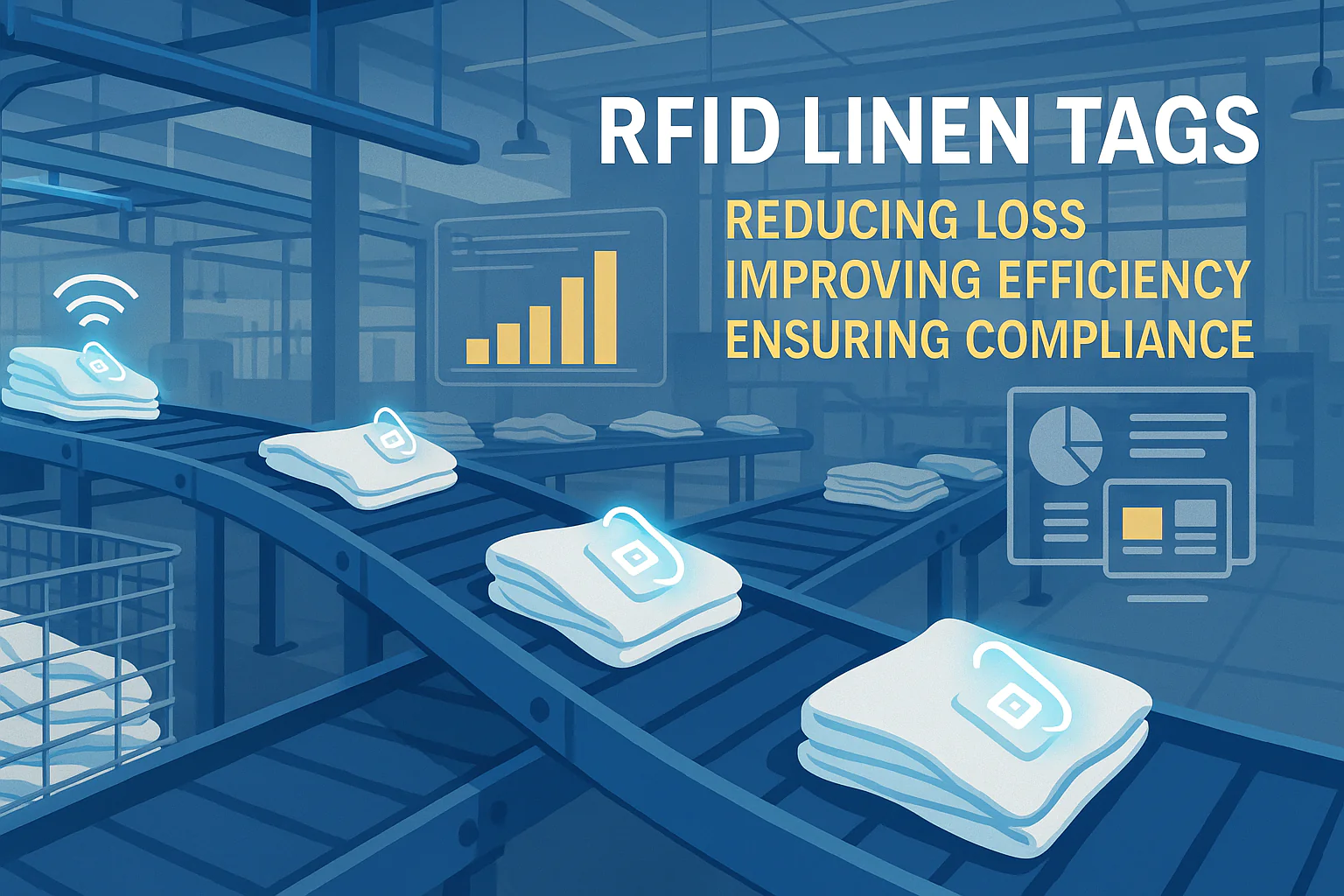
The Benefits of RFID Linen Tags in Commercial Laundry
Managing laundry in hospitals, hotels, or large laundry services is a big job. Each day, thousands of sheets, towels, and uniforms are washed, sorted, and sent back out. But problems like lost linens, sorting mistakes, and manual counting can cost companies a lot of money. For example, mid-sized hotels can lose over $200,000 each year from missing linens.
That’s where RFID Linen Tags come in.
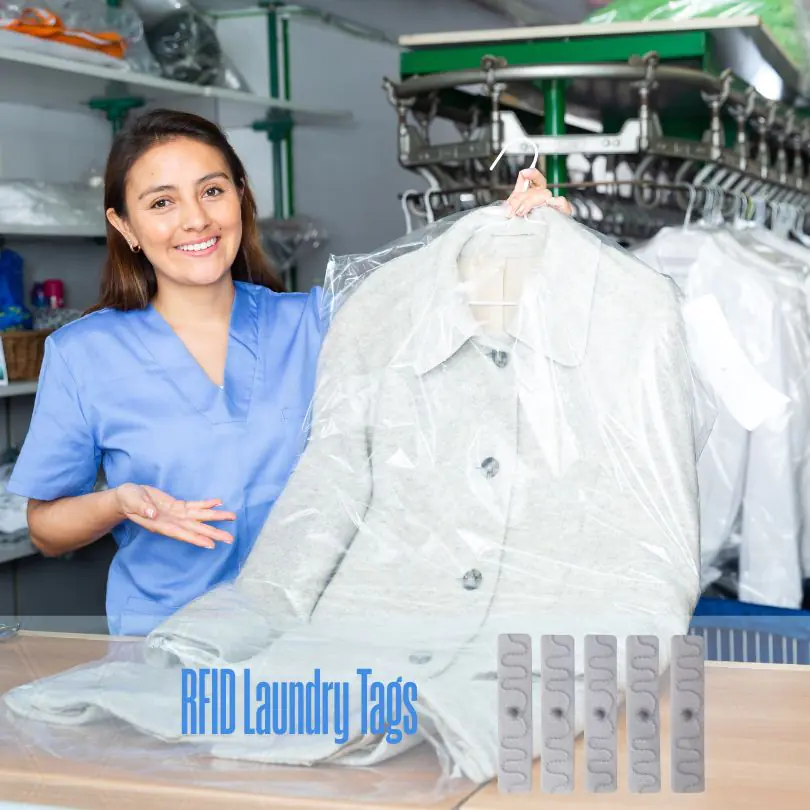
RFID Laundry Tag Guide 2025: Smarter Tracking, Less Waste, and Real Results
Did you know that smart RFID systems can reduce laundry losses by up to 95%? That’s a game-changer for laundry businesses that lose time and money tracking items manually.
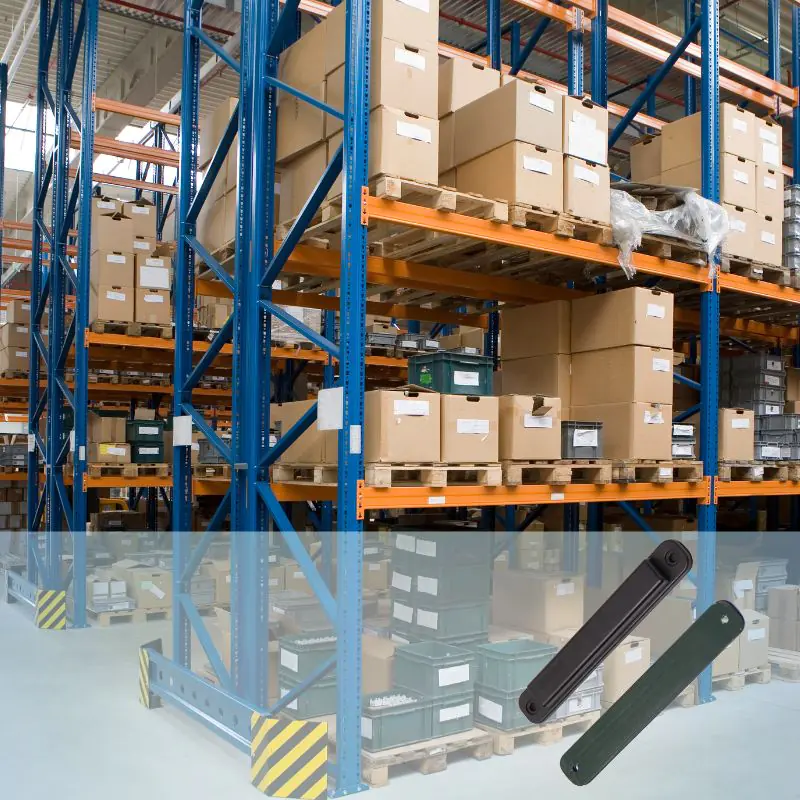
How RFID Tags for Pallet Streamline Tracking in Warehouses
Pallet-level tracking is critical for inventory accuracy, operational efficiency, and real-time visibility in today’s fast-paced logistics and supply chain environments.
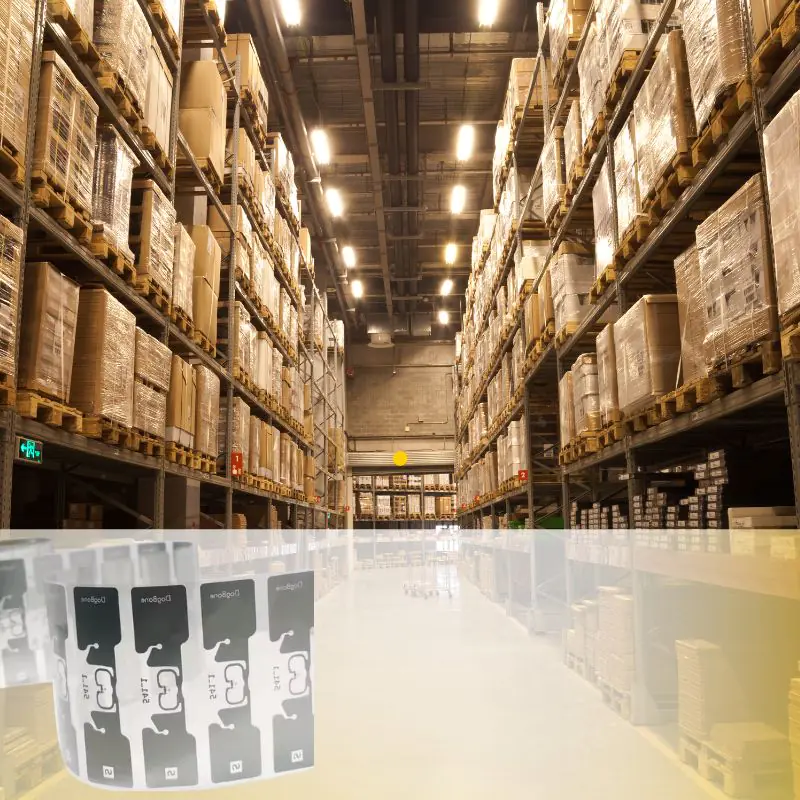
Top 5 Types RFID Tag for Warehouse Automation
Warehouse operations are becoming more complex, and manual tracking methods can’t keep up. RFID tags for warehouse automation enable real-time data capture, faster inventory processing, and better traceability.
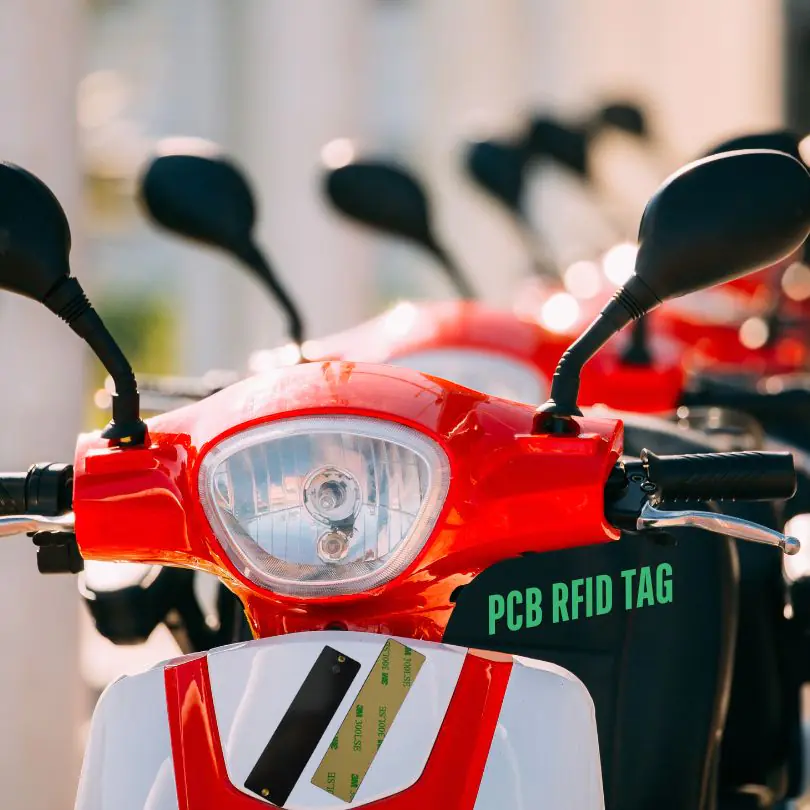
RFID Smart License Plates Help Hengshui to Track The E-Bikes
As urbanization accelerates and the green travel movement gains momentum, electric bicycles have become vital to daily commuting in Hengshui, Henan Province.
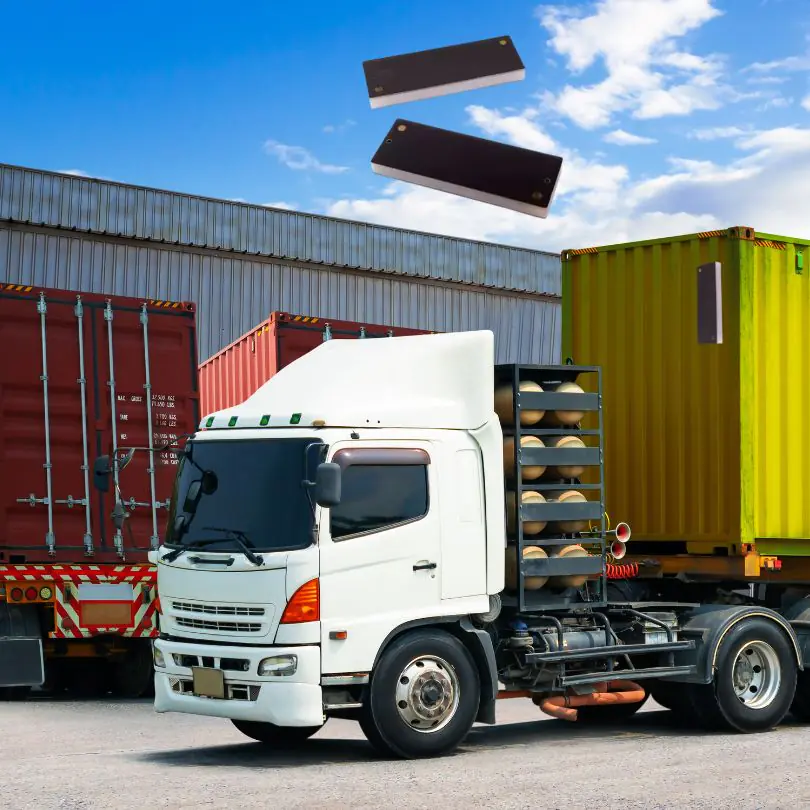
Apakah itu Teg PCB
Ketahui cara penyelesaian teg dan RFID yang inovatif mengubah industri daripada runcit dan logistik kepada penjagaan kesihatan dan pendidikan.
Tag
BLOG BERKAITAN

The Benefits of RFID Linen Tags in Commercial Laundry
Managing laundry in hospitals, hotels, or large laundry services is a big job. Each day, thousands of sheets, towels, and uniforms are washed, sorted, and sent back out. But problems like lost linens, sorting mistakes, and manual counting can cost companies a lot of money. For example, mid-sized hotels can lose over $200,000 each year from missing linens.
That’s where RFID Linen Tags come in.

RFID Laundry Tag Guide 2025: Smarter Tracking, Less Waste, and Real Results
Did you know that smart RFID systems can reduce laundry losses by up to 95%? That’s a game-changer for laundry businesses that lose time and money tracking items manually.

How RFID Tags for Pallet Streamline Tracking in Warehouses
Pallet-level tracking is critical for inventory accuracy, operational efficiency, and real-time visibility in today’s fast-paced logistics and supply chain environments.

